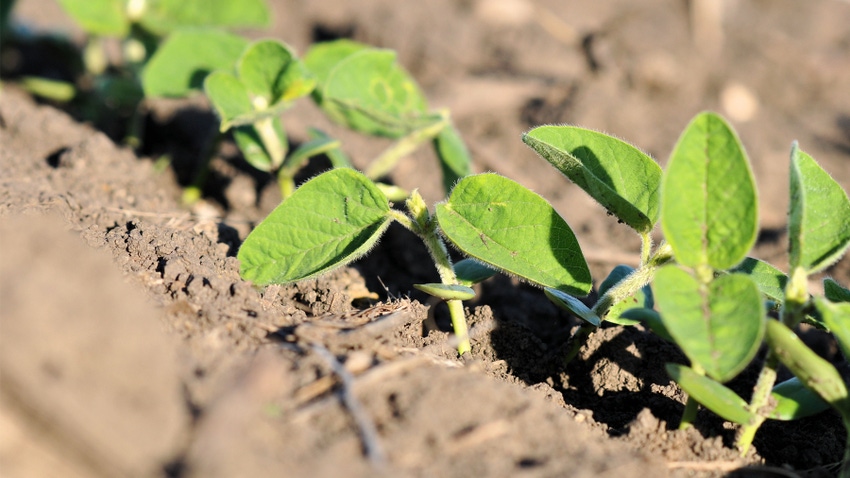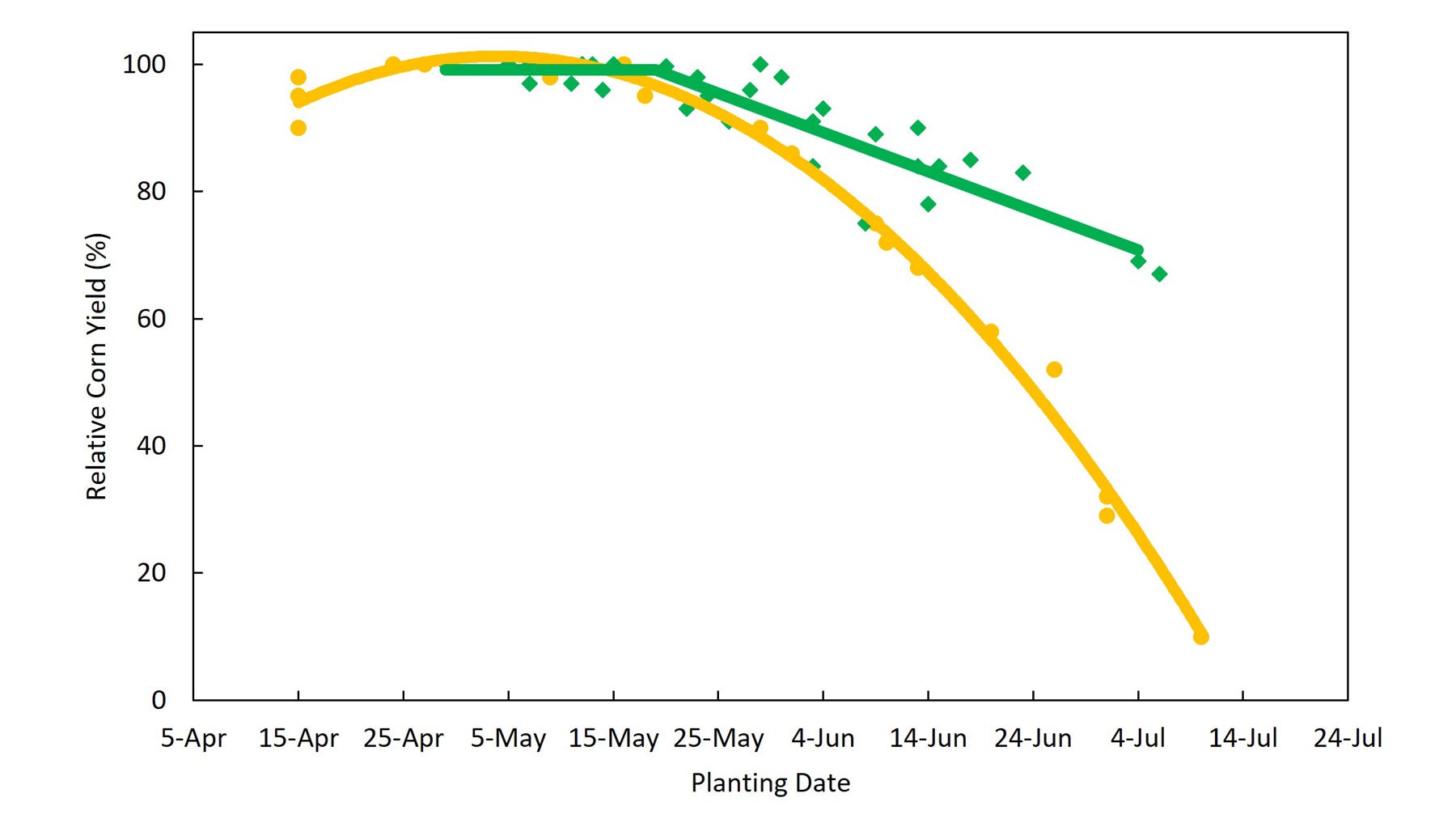November 24, 2023

Farmers have been planting soybeans earlier and earlier. In a nod to this trend, the USDA Risk Management Agency has moved up the earliest planting dates for replant insurance coverage. In Iowa, that looks like April 10 for the southern three tiers of counties and April 15 for the northern six tiers of counties. (See the Iowa State University Extension and Outreach Ag Decision Maker for more information.)
And still, farmers and researchers are experimenting with planting soybeans even earlier.

MAPPED OUT: The earliest planting dates for replant insurance coverage were updated ahead of the 2023 planting season. (Source: Iowa State University)
The hope of early soybean planting is that they’ll form a canopy faster, and have more plant nodes, higher pod retention, and ultimately, higher grain yields. It is true that early-planted soybeans will close canopy sooner and — in some situations — can begin flowering and pod-setting earlier compared to soybean planted at the end of April or in early May. However, this does not always translate into higher yields.
Soybean growing 101
Soybeans are just as susceptible as corn to cold injury when they are planted into cold, wet soils. Soybean cold injury results in seed death before emergence or loss of seedling vigor; much like corn, however, corn will also have corkscrewing of the mesocotyl. In severe instances, populations of emerged soybeans could be reduced up to 20%.
The hypocotyl and cotyledons are thick and waxy, and they have a high sugar content. These characteristics do allow them to tolerate frost better than corn leaves — down to 30 degrees F. However, this stage only lasts until the soybean growing point begins to develop. After that, soybean frost injury is much greater than corn.
Soybean planting is also influenced by corn planting. I often get asked which should be planted first, corn or soybeans? Both have the highest yield potential when planted prior to May 20. After May 20, yield losses due to late planting are greater for corn than they are for soybeans.

HOW IT COULD PLAY OUT: How yields could potentially play out in response to planting dates for corn and soybeans in Iowa. Green line = soybean, yellow line = corn. (Source: Iowa State University)
So, if there is potential to be planting after May 20, plant your corn first. If you can plant all acres before May 20, it does not really matter whether soybeans or corn is planted first. This may be a situation where soybean and corn planting dates can be used to increase the harvest window for soybean.
If you plant soybeans in mid-April or earlier, there are some important considerations that can help improve plant health and yield potential.
Plant soybeans into warm soils. That means soils where the soil temperature will not decrease during the first 24 hours. Aim for planting in late morning or early afternoon, when soil temperatures may be greater than 50 degrees. Soybean seeds imbibe water in the first 12 to 24 hours, and imbibitional chilling is often associated with cold soil water temperatures during this seed-imbibing time frame.
Choose soybean varieties well. Look for varieties with high scores for early-season vigor or cold tolerance, that are high quality, and that have a high seed germination percentage. If time allows, get a cold, saturated germination test to determine risk potential for planting into harsher soil conditions.
Account for frost and freeze damage. This can be associated with early planting dates. One benefit from planting earlier is that emergence is usually delayed, too.
Increase seeding rates. Bump them by 10% to 20% to account for emergence losses and seedling disease mortality. The ultimate goal is to have 100,000 plants per acre at harvesttime.
Consider fungicidal and insecticidal seed treatments. That’s to help manage an increased risk of seedling diseases and bean leaf beetles. Fusarium, pythium, phytophthora, and Rhizoctonia seedling disease risk is greater when emergence is delayed, especially in cool, wet soils. Sudden death syndrome and phytophthora can also be managed through variety selection. Insecticide seed treatments can protect against early-season insects, and bean leaf beetles tend to be most problematic in the first emerging soybean fields.
Regardless of when you plant your soybean, scout your earliest-planted fields first to see what issues are to come. Compare plant populations from early-planted and late-planted fields. Identify how weed pressure is affected by changes in canopy closure. By comparing and contrasting early-planted versus late-planted soybean, you’ll be able to determine what benefits were attained more easily.
Licht is an assistant professor in agronomy and cropping systems specialist for Iowa State University.
About the Author(s)
You May Also Like






